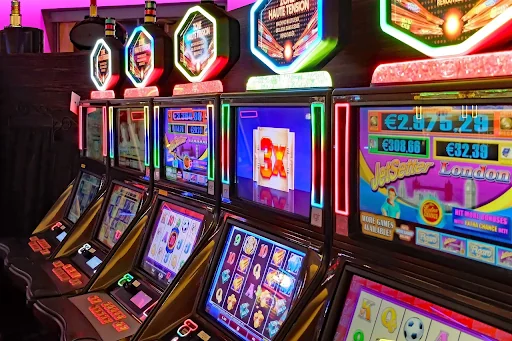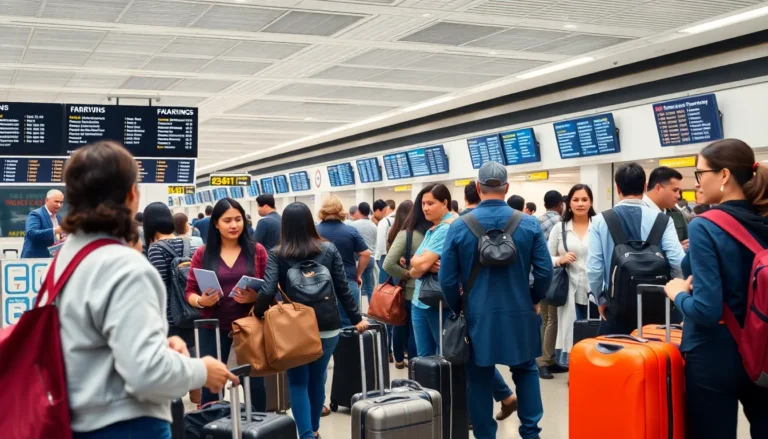Table of Contents
ToggleIn a world where coffee lovers are constantly on the hunt for the next big thing, tap culture coffee has emerged as the cool kid on the block. Imagine sipping your favorite brew straight from the tap, like a fine craft beer but with a caffeine kick that’ll have you buzzing all day. It’s not just a trend; it’s a revolution that’s transforming how people experience their daily java.
Gone are the days of waiting in long lines for a barista to whip up your drink. With tap culture coffee, convenience meets quality, and let’s be honest, who doesn’t want to feel like a coffee connoisseur while saving time? So grab your mug and get ready to dive into the delightful world of tap culture coffee, where every sip promises to be an adventure worth savoring.
Overview of Tap Culture Coffee
Tap culture coffee transforms how enthusiasts enjoy their favorite beverage. This innovative approach allows consumers to pour coffee straight from a tap, similar to craft beer. Convenience stands out as a primary benefit, removing the need for brewing equipment or waiting in long lines. Quality holds equal importance, as many tap coffee options feature freshly roasted, specialty beans.
Coffee lovers appreciate the variety offered within tap culture. Different flavors and brews cater to diverse preferences, from light and fruity blends to rich and bold options. Unique seasonal offerings continuously provide excitement for readers exploring this new trend.
The experience of drinking tap coffee mirrors that of tasting craft beer. Skilled baristas or roasters often curate selections, ensuring each pour delights the palate. Temperature control becomes key in maintaining optimal freshness, as coffee travels through chilled lines directly to the cup.
Sustainability plays a significant role in the appeal of tap coffee. By reducing waste associated with single-use cups and packaging, this method promotes eco-friendly consumption. Many establishments implement reusable cups, further minimizing environmental impact and enhancing the overall experience.
Learning about tap culture coffee reveals a commitment to innovation and quality within the coffee industry. Engaging with this trend offers enthusiasts a novel way to appreciate coffee while maintaining focus on enjoyment and sustainability. Each sip showcases the richness of craft-driven practices, inviting exploration into flavors that elevate commonplace routines.
Origins of Tap Culture Coffee
Tap culture coffee has its roots in a desire to enhance the coffee experience. Coffee enthusiasts sought more accessible options, similar to the craft beer movement.
Historical Background
Coffee originated in ancient Ethiopia, enjoying popularity in the Middle East by the 15th century. Espresso’s invention in the early 20th century transformed coffee brewing methods. As espresso bars emerged in Italy, coffee culture expanded, influencing European trends. The introduction of specialty coffee in the 1970s laid the foundation for today’s diverse offerings. By the early 2000s, cafes gained popularity for quality brews, setting the stage for tap culture’s arrival. The craft approach emphasized freshness and flavor, influencing contemporary preferences in coffee consumption.
Evolution of Coffee Tapping Methods
Tapping coffee began with innovations in beverage service. Classic methods utilized dispensing systems for espresso and nitro cold brew. Over time, advancements in technology improved temperature control and flavor integrity. Serving coffee from taps gained traction, echoing methods employed in breweries. Blends poured from tap systems highlighted the range of flavors available. Specialized equipment allowed baristas to create unique profiles, enhancing the experience. Tap culture coffee continues to evolve, showcasing a commitment to quality and an exciting way to enjoy various brews.
Brewing Techniques
Brewing techniques significantly influence the overall tap culture coffee experience, blending traditional methods with modern innovations.
Traditional vs. Modern Methods
Traditional brewing techniques focus on artisanal skills. Pour-over and French press methods emphasize precision for flavor extraction. Many coffee enthusiasts appreciate these classic methods for their hands-on approach and rich flavors. Modern methods, however, incorporate advanced technology. Nitro cold brew systems and high-tech espresso machines create consistent, high-quality results. Each method offers distinct flavors, attracting different preferences among coffee lovers. The contrast between traditional and modern techniques enables a broader range of experiences, showcasing the versatility of coffee.
Equipment Used in Tap Culture Coffee
Equipment plays a crucial role in tap culture coffee. Tap systems designed for cold brew have specialized components for optimal preservation. Keg systems maintain freshness, minimizing oxidation via temperature control. Nitro setups infuse coffee with nitrogen, resulting in a creamy texture and unique mouthfeel. Additionally, high-quality faucets ensure smooth dispensing, similar to craft beer. Baristas rely on precision scales and grinders to maintain consistency in each pour. The combination of these tools elevates the coffee experience, appealing to enthusiasts seeking quality and innovation.
Flavor Profiles
Flavor profiles in tap culture coffee range widely, providing a diverse tasting experience for coffee enthusiasts. Each pour offers distinct notes and characteristics, highlighting the remarkable variety within this coffee trend.
Common Flavor Notes
Light blends often feature citrus and floral notes, while medium roasts display balanced sweetness and nuttiness. Deep, bold brews typically contain chocolate and caramel undertones, appealing to those who favor rich flavors. Unique seasonal offerings can introduce spices or fruitiness, elevating the tasting experience. Craftsmanship plays a significant role, as skilled baristas select beans to create harmonious flavor profiles that delight the palate.
Regional Variations
Regional variations in coffee yield unique flavor expressions influenced by growing conditions. Ethiopian coffees often present vibrant fruitiness and floral aromas, while Colombian beans showcase nutty and caramel qualities. Kenyans typically boast bright acidity with berry notes, appealing to lovers of bold and complex flavors. Brazilian coffees tend to be more mellow, featuring chocolate and nutty undertones. Understanding these regional distinctions enhances appreciation for the global diversity found in tap culture coffee.
Community and Culture
Tap culture coffee fosters community engagement through shared experiences. Enthusiasts gather in spaces designed for connection, showcasing their passion for quality brews.
Tap Rooms and Social Spaces
Tap rooms serve as central hubs for coffee lovers. Each venue offers a unique atmosphere that encourages conversation and interaction. Comfortable seating and inviting decor help create a relaxed environment. Baristas often engage with customers, sharing expertise and recommendations about available offerings. These spaces frequently host educational sessions on coffee brewing or tasting, promoting knowledge among patrons. Local art exhibitions and music events complement the coffee experience, enhancing community ties.
Events and Gatherings
Events dedicated to tap culture coffee serve as exciting opportunities for discovery. Coffee festivals and competitions bring together roasters, enthusiasts, and casual drinkers alike. Attendees can sample a variety of blends, expanding their understanding of flavor profiles. Workshops on brewing techniques encourage participants to explore their coffee-making skills. Seasonal gatherings celebrate unique offerings, allowing attendees to experience limited-time flavors. These gatherings strengthen relationships within the coffee community, fostering a shared appreciation for this innovative culture.
Tap culture coffee represents a dynamic shift in how enthusiasts experience their favorite beverage. With its emphasis on quality convenience and sustainability it’s no wonder this trend is gaining traction. The ability to enjoy diverse flavors from expertly curated taps not only elevates the coffee experience but also fosters a sense of community among coffee lovers. As more cafes adopt this innovative approach the future of tap culture coffee looks bright. Each pour invites exploration and appreciation of the rich history and craftsmanship behind every cup. Embracing this trend means enjoying coffee in a way that’s both exciting and eco-friendly.







